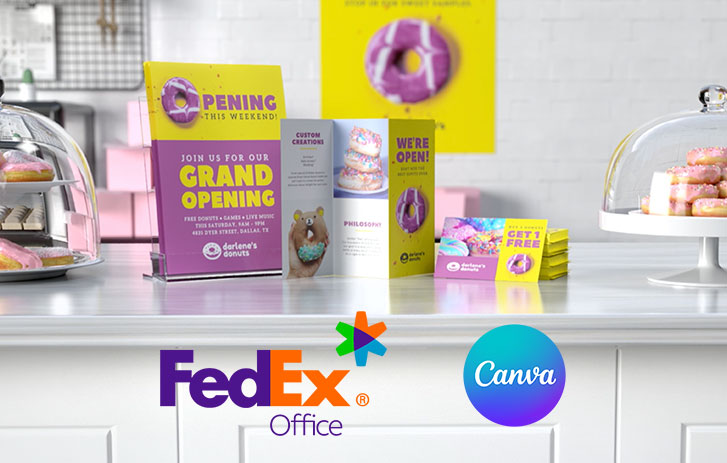

As the pandemic shifted large segments of the knowledge sector to a remote work model, HR executives moved mountains to embrace the digital transformation that would ensure an unbroken communications supply chain.
But there’s just one problem — the shift to remote work has turned out to be not-so-temporary. Gartner reports that 80% of company leaders plan to permit remote work after the pandemic, and McKinsey & Company estimates that as much as 20% of the workforce could work remotely 3-5 days per week as effectively as they could from the office indefinitely.
HR executives could soon find that a communications supply chain that relies entirely on digital connection like applications, email, and instant messaging software may not deliver the results they need for the long-term.
“When faced with an immediate shift requiring quick action, most HR executives perceive digital to be easier, cheaper, and faster,” says John Sullivan, National Account Manager at FedEx Office. “But that’s only true some of the time. To support the hybrid future of work, executives must have all formats available to them. Only then can they choose the best option for the best opportunity—not just the one within reach.”
Here are three considerations to help guide employers as they move away from their pandemic response mode into a long-term, effective model of employee communications in a hybrid work environment.
1. Put suppliers in place for every format
Preparation prevents poor performance—and in this case, poor communication. One of the biggest threats to an employer’s communications supply chain is losing access to different formats because the administrative processes become stagnant or the lack of an existing relationship makes it suddenly and prohibitively expensive, as an employer might be required to quickly onboard a supplier and make payments for expedited services.
To prevent this, an organization can proactively assess its current options to ensure processes are in place to engage employees in any format that might be relevant, including, but not limited to, the following formats:
Digital
-
Email
-
Instant messaging
-
Secure document sharing
-
Secure document routing and signature
On-Demand Print
-
Recruiting flyers and brochures
-
Benefits guides and pamphlets
-
New hire paperwork
-
Policies and procedures
-
Training manuals, presentations, and booklets
-
Company newsletters
-
Business cards and stationery
-
Morale and wellness packages or shipments
-
Recognition certificates and awards
“Many employers don’t often think about their communications supply chain until they need it, and if you don’t have these relationships in place in advance, you can miss out on the best format to bring a message to life,” said Aimee DiCicco, Senior Vice President of Commercial Business Development at FedEx Office.
2. Consider employee context
Ultimately, the most effective communication is the one an employee will open, read, and respond to. Early in 2020, when the shift to remote work was still in flux, that format was often digital. But in an increasingly digital environment, employers need to make sure they can cut through the noise of notifications to get their message across in print.
“During the first wave of remote work right when the pandemic started, the surge in digital interactions felt more efficient and connective for employers and employees alike — everyone was on high alert for information,” says Sullivan. “But these behaviors quickly led to digital overwhelm and Zoom fatigue, leaving employees primed to engage with another format.”
To get a better sense of the most effective formats for employees, employers can capture a benchmark of how the organization is reaching out or connecting. What statistics can be collected around how many emails employees send and receive each day, as well as instant messages on corporate platforms? Which formats do employees welcome, and which are stressful?
Answers to these questions will be subjective, but they’ll empower companies with valuable insight into how employees experience communication and which formats they prefer. It will also give companies an opportunity to ensure they’re providing a seamless, holistic experience across all channels.
3. Understand the nuances of sustainability
Many employers assume the only sustainable communications are digital ones, but that’s not true. In reality, print providers like FedEx Office have come a long way in awareness of and progress towards sustainability issues, like removing any unnecessary printing or paper usage from the order process through digital forms and allowing employers to create re-usable signs, images, and messages on substrates like aluminum, vinyl, and PVC.
“The positive impact on the environment created by people working from home and traveling less has brought sustainability back into focus,” explained Sullivan. “While digital communications often don’t incur an upfront cost to the environment, the leading print providers in the world are doing great work in limiting the energy consumption and waste associated with creating effective, high-quality print materials, including FedEx’s promise to be carbon-neutral by 2040.”
Everywhere you look, a clear path forward
Looking into the future, most successful organizations probably will not have made a choice between print and digital. They will have put processes and suppliers in place to make sure they can use both formats to their fullest advantage. Only then can HR leaders and managers be free to focus on more pressing priorities: the people looking to them to lead.
“There’s a place for digital and a place for print,” said Sullivan. “Employers that don’t have access to both won’t be able to balance the onslaught of communication coming at their employees at any given time — and they’ll run the risk of losing people’s attention when they need it the most.”
Click here to learn more about how FedEx Office can support your communications supply chain.























